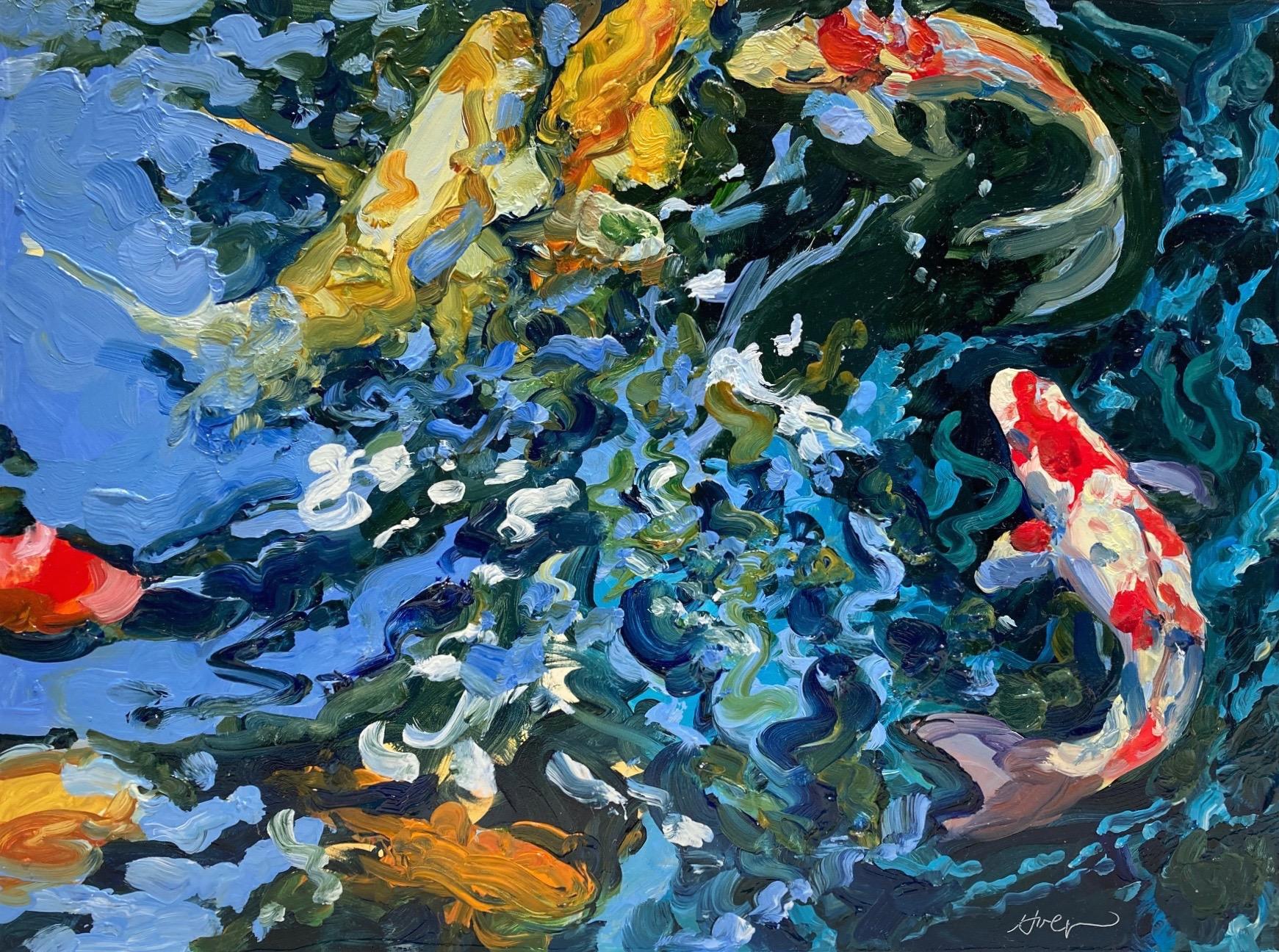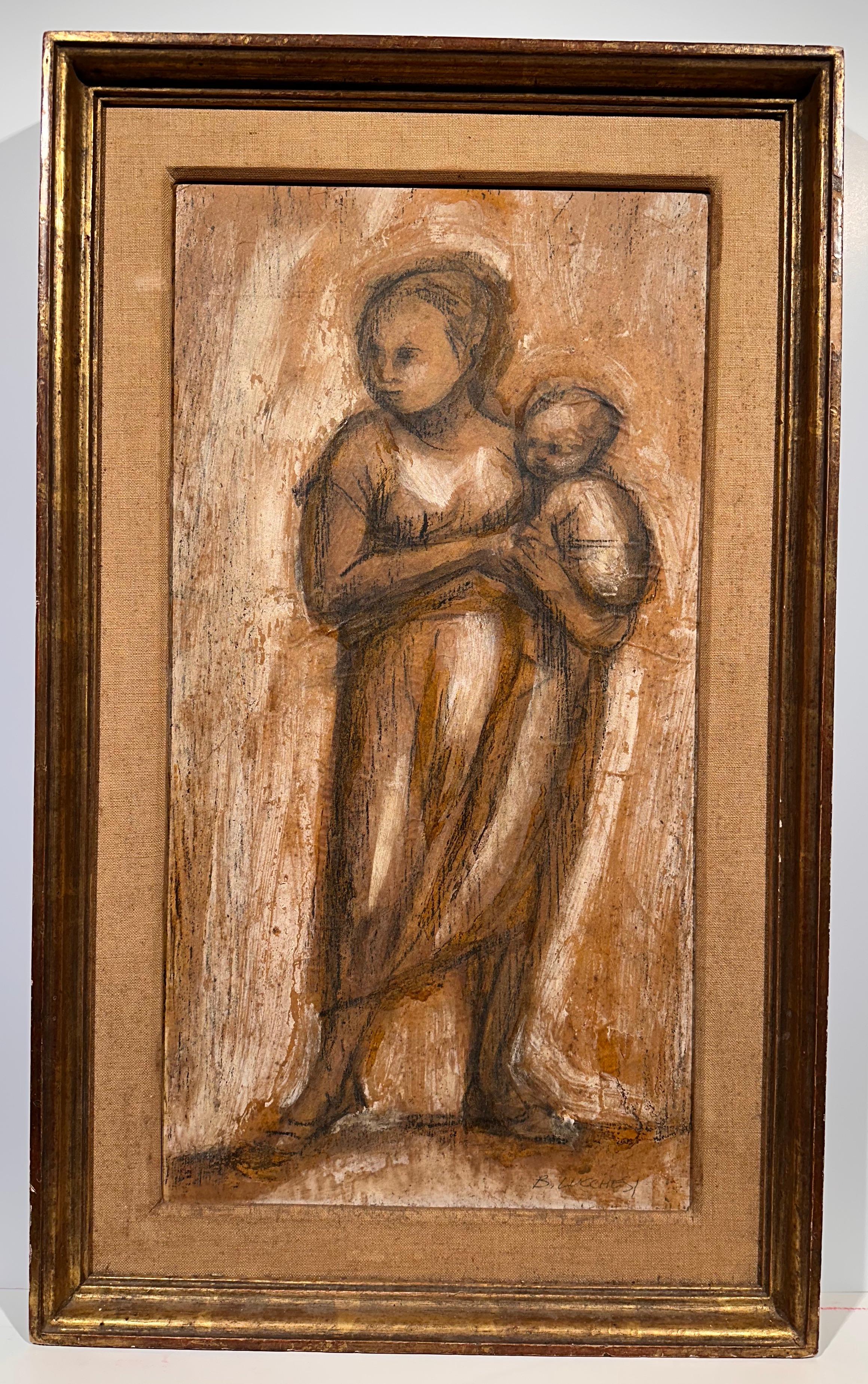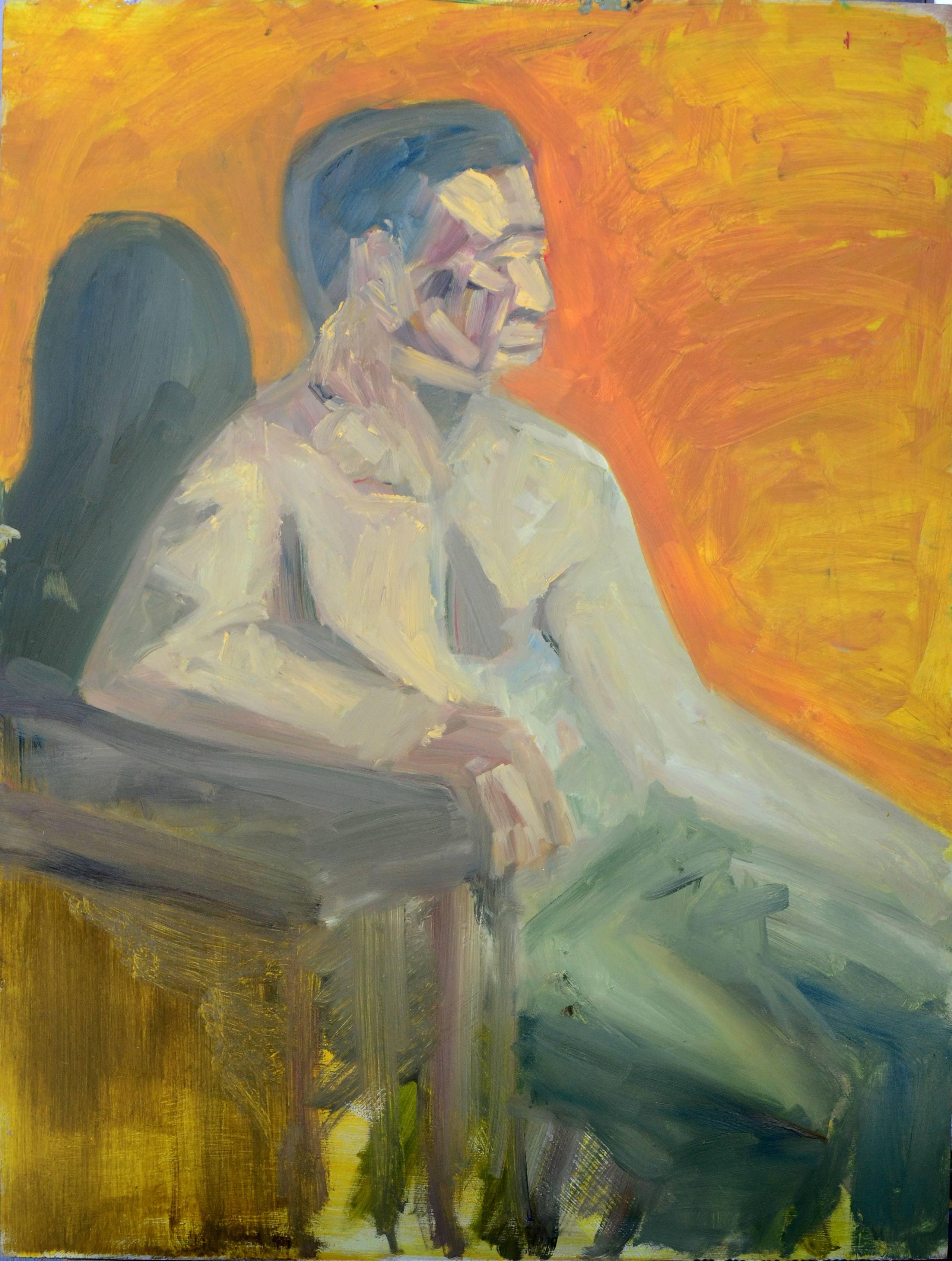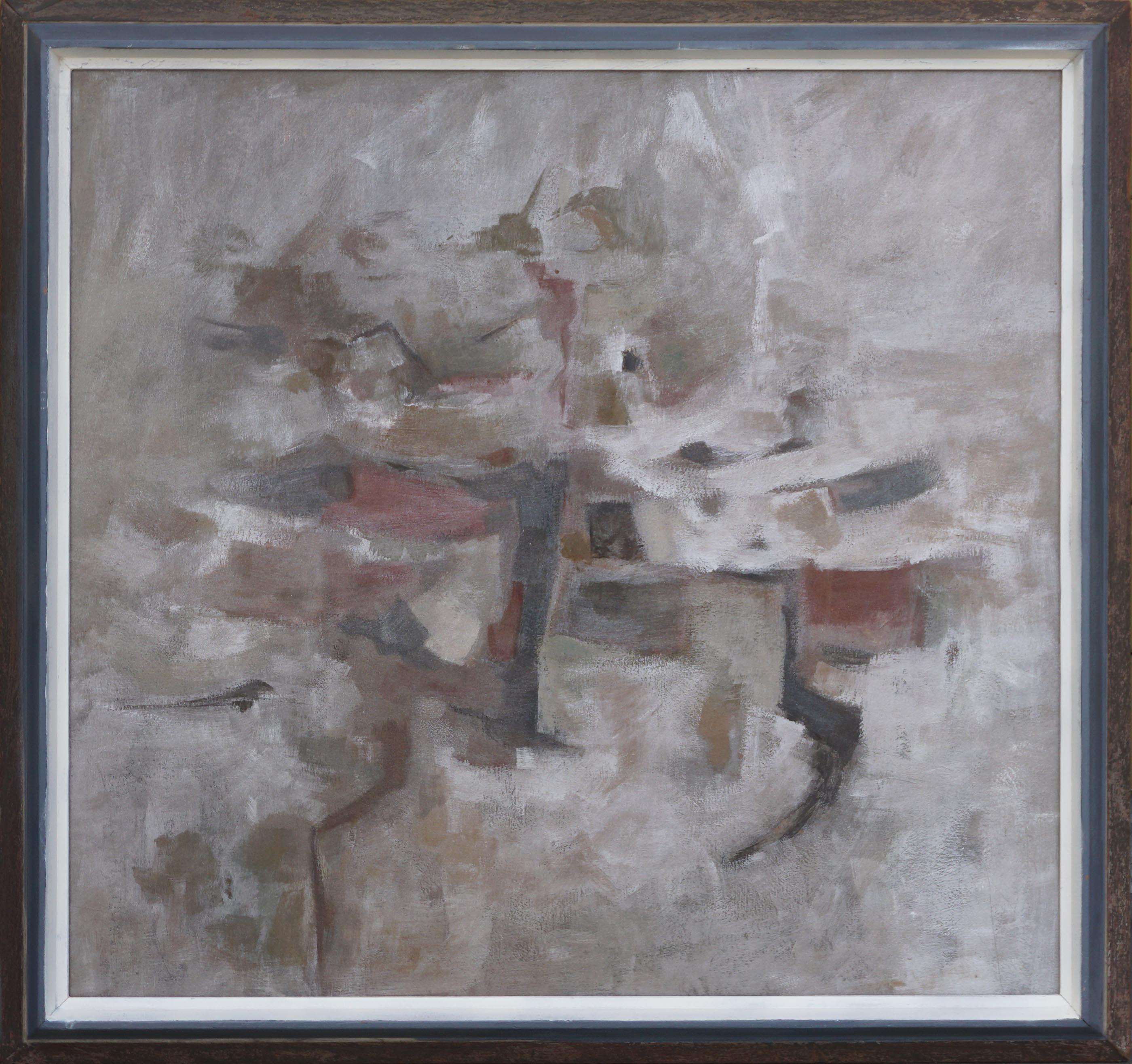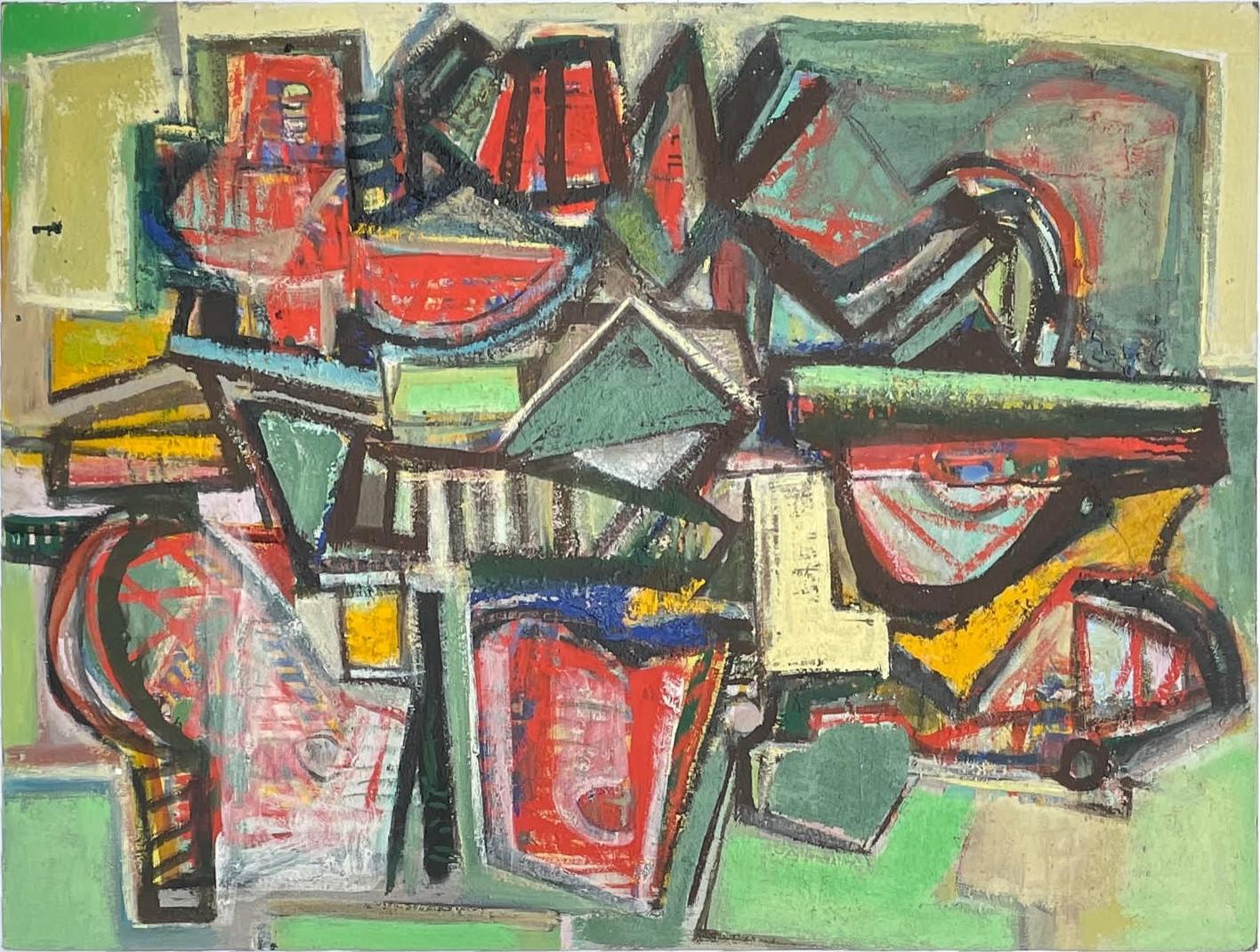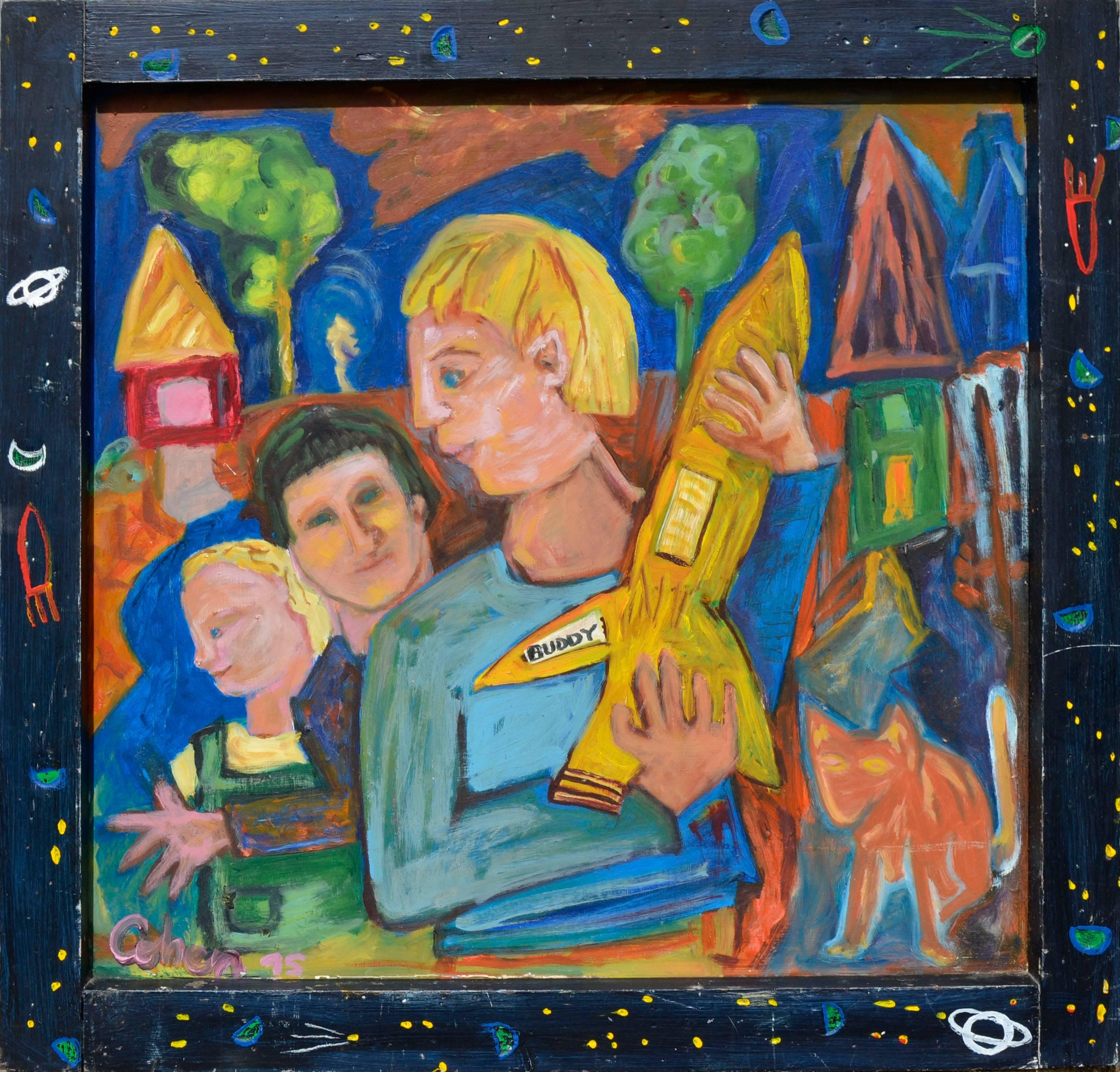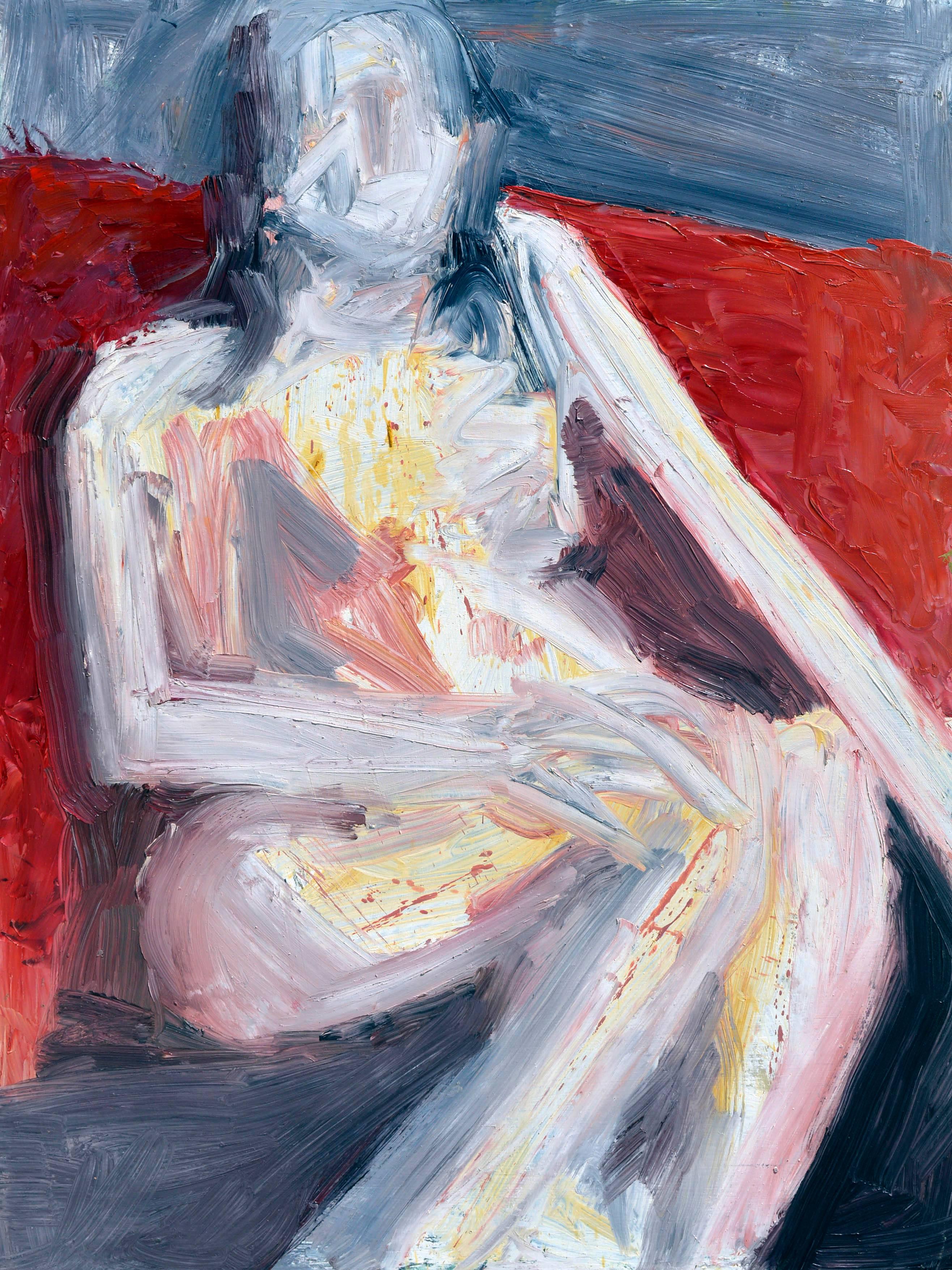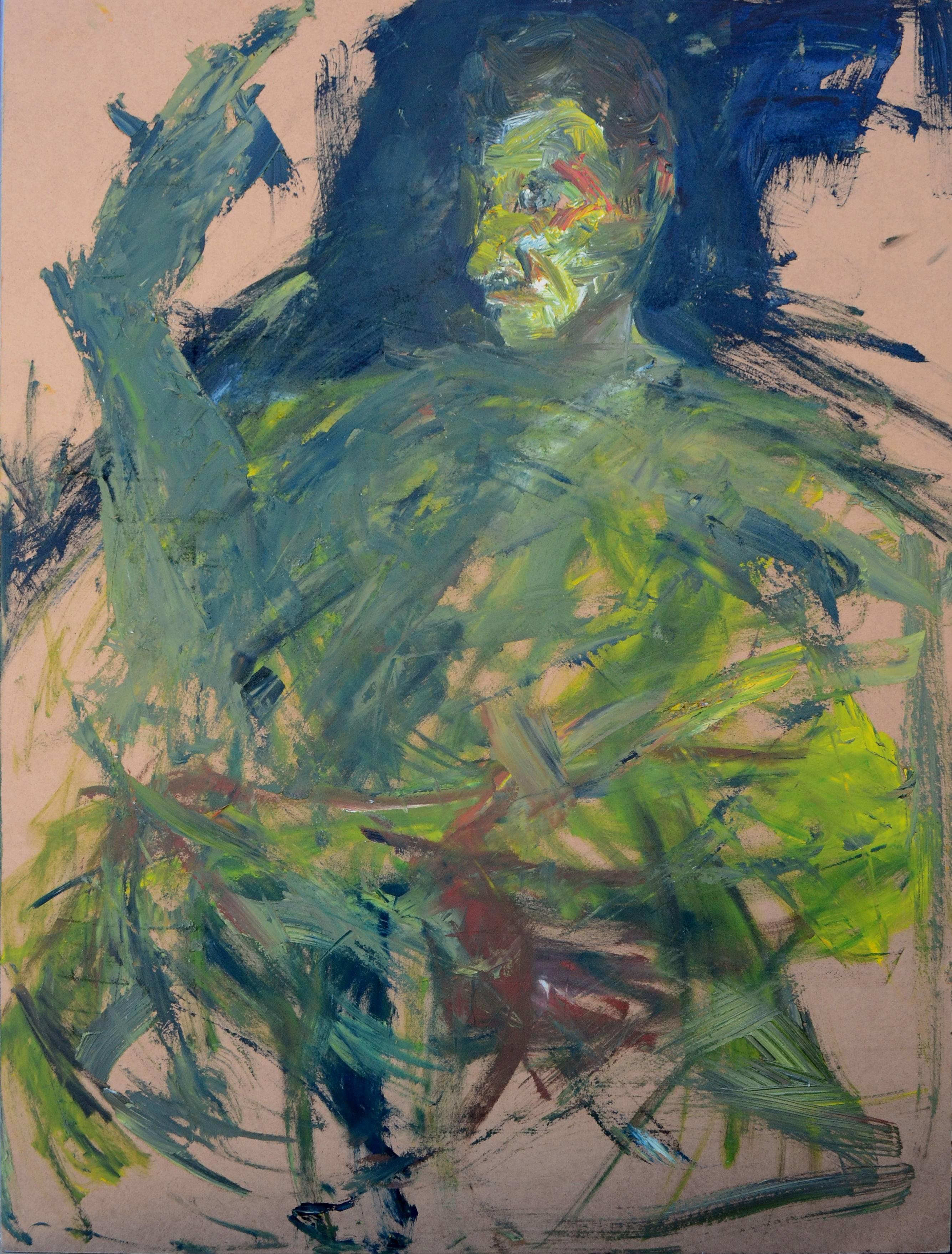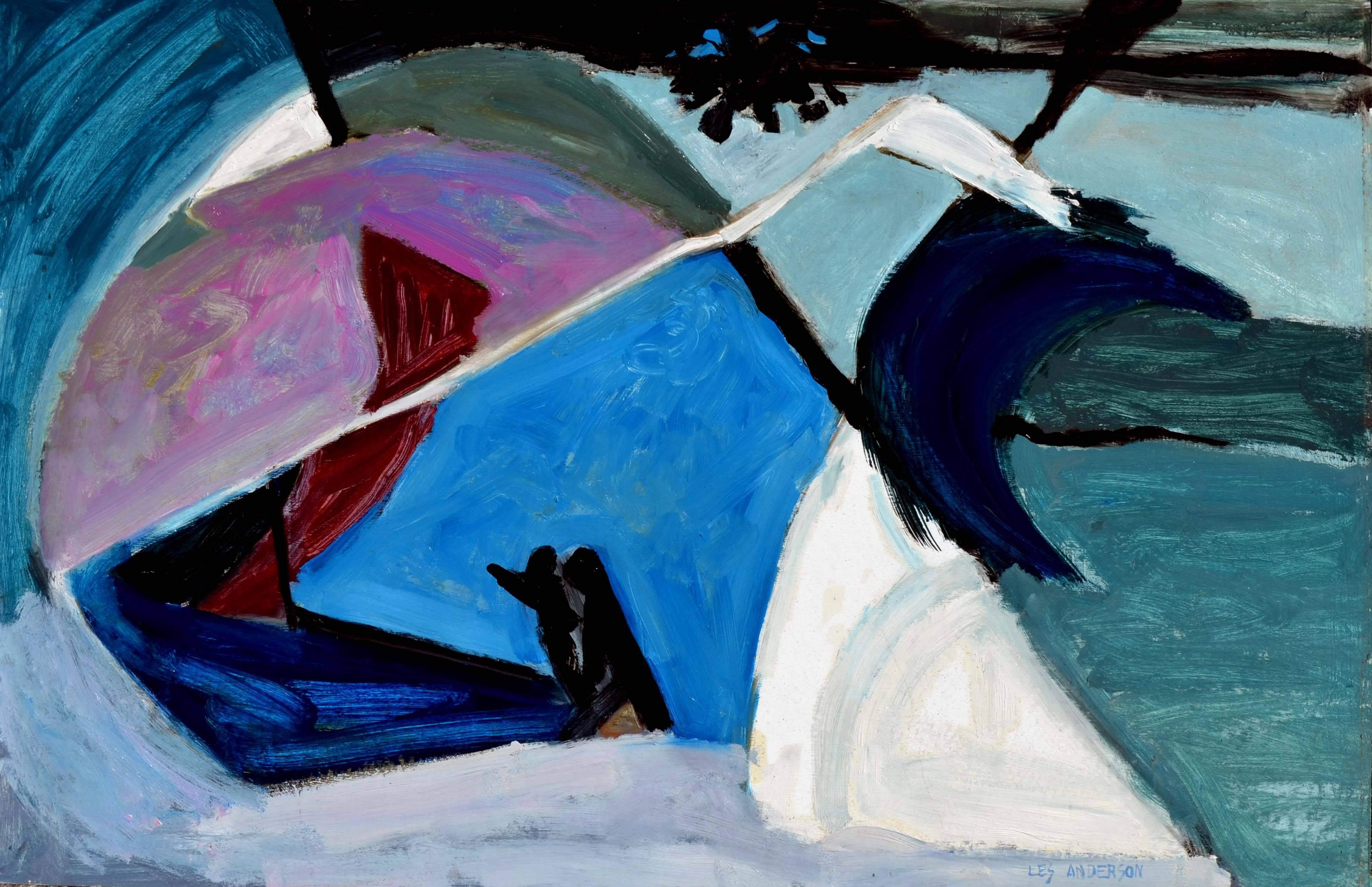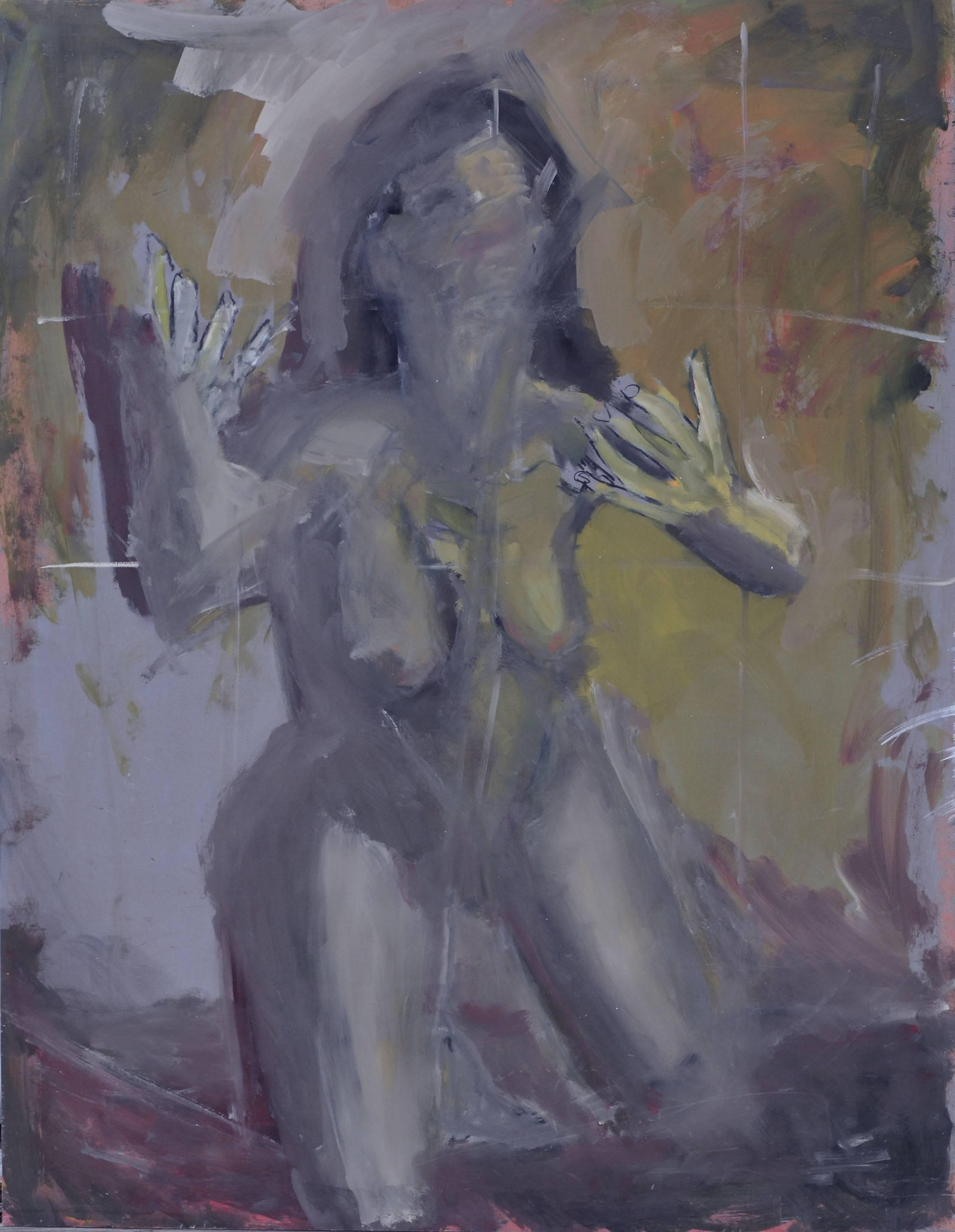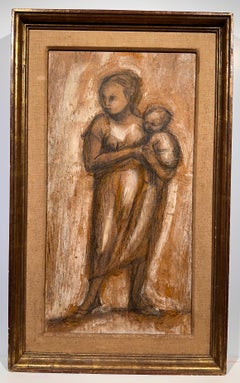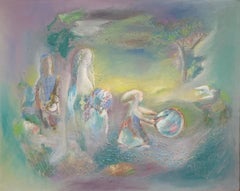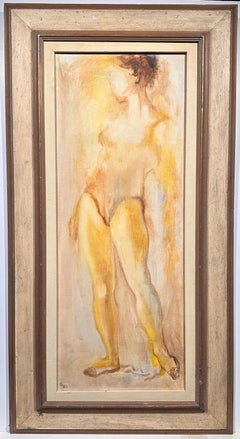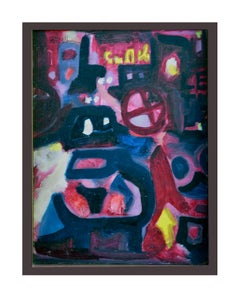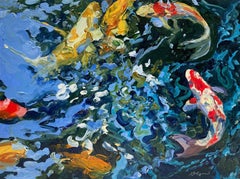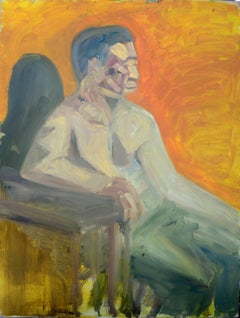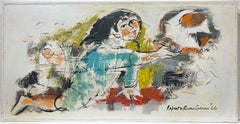
La Paz (Puerto Rican mid-century muralist artist)
View Similar Items
Want more images or videos?
Request additional images or videos from the seller
1 of 11
Rafael de Rivera GarciaLa Paz (Puerto Rican mid-century muralist artist)1966
1966
Price:$2,000
About the Item
- Creator:Rafael de Rivera Garcia (1930, American)
- Creation Year:1966
- Dimensions:Height: 16 in (40.64 cm)Width: 32 in (81.28 cm)Depth: 1 in (2.54 cm)
- Medium:
- Movement & Style:
- Period:
- Condition:
- Gallery Location:Wilton Manors, FL
- Reference Number:1stDibs: LU24528577972
About the Seller
4.9
Platinum Seller
Premium sellers with a 4.7+ rating and 24-hour response times
Established in 2007
1stDibs seller since 2015
417 sales on 1stDibs
Typical response time: 2 hours
Authenticity Guarantee
In the unlikely event there’s an issue with an item’s authenticity, contact us within 1 year for a full refund. DetailsMoney-Back Guarantee
If your item is not as described, is damaged in transit, or does not arrive, contact us within 7 days for a full refund. Details24-Hour Cancellation
You have a 24-hour grace period in which to reconsider your purchase, with no questions asked.Vetted Professional Sellers
Our world-class sellers must adhere to strict standards for service and quality, maintaining the integrity of our listings.Price-Match Guarantee
If you find that a seller listed the same item for a lower price elsewhere, we’ll match it.Trusted Global Delivery
Our best-in-class carrier network provides specialized shipping options worldwide, including custom delivery.More From This Seller
View AllMother and Child
By Bruno Lucchesi
Located in Wilton Manors, FL
Bruno Lucchesi (b.1926). Mother and Child, ca. 1960. Oil and charcoal on sized paper mounted to masonite, measuring 11 x 21 inches; 15.5 x 25.5 inches in original gold leaf frame. Si...
Category
Mid-20th Century Abstract Figurative Paintings
Materials
Masonite, Paper, Oil
$560 Sale Price
20% Off
Comes June (Surrealist Bride painting)
By Nura Ulreich
Located in Wilton Manors, FL
Nura Ulreich (1899-1950). June Comes, ca. 1935. Oil on sized panel. 24 x 30 inches; 26 x 32 inches framed. Metal leaf over wormy chestnut custom frame. Ex...
Category
Mid-20th Century Abstract Figurative Paintings
Materials
Oil, Board
$2,500 Sale Price
50% Off
Female Dancer
Located in Wilton Manors, FL
Beautiful mid-century painting of a female dancer by J. Steven. Oil on canvas measures 12 x 30 inches, 21 x 39 inches framed. Signed lower left with arti...
Category
Mid-20th Century Abstract Figurative Paintings
Materials
Oil
Ikon
Located in Wilton Manors, FL
Harry Sefarbi (1917-2009)
Ikon, ca. 1980.
Oil on panel, 5.25 x 16 inches. Framed measurement: 8.25 x 19 inches.
Signed lower right. Accompanied by 3 pieces of paperwork.
The A...
Category
Mid-20th Century Abstract Figurative Paintings
Materials
Oil
Man in Leather Smoking
By Vito Tomasello
Located in Wilton Manors, FL
Beautiful ca. 1960 portrait by American artist, Vito Tomasello. Oil on line canvas, 20 x 24 inches, 28 x 32 inches in period frame. Signed lower right.
A lifetime NYC resident, T...
Category
Mid-20th Century Abstract Figurative Paintings
Materials
Oil, Canvas
$1,500 Sale Price
25% Off
Fisherman at Dusk
By Oskar D'Amico
Located in Wilton Manors, FL
Oskar D'Amico (1923-2003). Fisherman at Dusk, c.1960. Oil on linen canvas, 16 x 30 inches; 18 x 32 inches (frame). Signed lower right. Excellent condition with no damage or conservation.
Biography:
Oskar Maria D'Amico (February 22, 1923 – May 3, 2003) was an active Italian artist in Rome, Naples, Lanciano, Cisterna, Milan, Gallarate, Torino, Zagabria, Paris, Toulouse, Melun, Carenac, Maubeuge, Madrid, Barcelona, Zaragoza, Budapest, Győr, Mexico City, Cuernavaca, Morelia, Toronto, New York City, Philadelphia, Los Angeles, San Francisco, Miami, Denver, Santa Fe, Albuquerque and Socorro, between 1943 and 2003.
He is considered a Nomad artist because of his ability to work in various styles. He had three major periods in his artistic life: Figurative, Materic and Geometric. [1]He also was an outstanding art director for more than 75 epic movies. D'Amico had a very outgoing personality. He was a non-conformist, which was reflected in his work throughout his life. D'Amico was born in CastelFrentano, Italy, a small village in Abruzzo. At a young age, he felt he had to leave and dive into the big world. After being a seminarist with the Salesiani during World War II, he left Naples, where he studied architecture, and began a great adventure in Rome.
He specialized at the time in decorating nightclubs and bars, and invented a special type of double ceiling to hide the lights. D'Amico, who was self-taught as a teenager in drawing and painting, burst onto the filmmaking scene in Rome when an art director asked him to do a perspective of a set design. Soon other moviemakers were calling him.[2]
D'Amico was an art director on 75 films including two by Orson Welles. D’Amico was able to create a real marble floor in the set of the palace of the King Saul, in "David and Goliath" directed by Orson Welles. Art directors previously painted a simulated marble on top of concrete due to the cost of the real thing. D'Amico became an associate of Jadran Films in ex-Yugoslavia, which specialized in Roman and Egyptian constructions.
While an art director, he never stopped painting. His faceless clowns, reflecting the people who had no identity after World War II, were a big success. In the early 1960s, D'Amico moved with his family to Toronto, Canada, another place he felt was too small. He left for Philadelphia and New York City, which affected his work. He turned his focus to abstract, and for more than a decade created abstract Expressionist paintings "on the plane of all matter" that he called "Materic". The Materic style, which he invented, was done in several media and could not be changed once on the canvas. The paintings were very well received. D’Amico sold more than 400 in Philadelphia and New York City. Unfortunately he had to stop doing the Materics because the colors he used were harmful to his liver.
In the mid 1970s, he returned to his architectural roots and developed a new vision for Abstract Constructivism using just acrylic colors. Presented in Paris by his French Art dealer, Francoise Tournier, at the Grand Palais de Paris, and in Mexico City, D'Amico's interpretation of the "New Geometry" was widely admired. In 1983, when he presented the work at the Bodley Gallery, people whispered that he had the potential to be the new Picasso because of his eclecticism and the Nomad nature of his styles.
In 1987, D'Amico abandoned the gypsy life and settled in New Mexico. Albuquerque was the perfect place to dedicate himself 100 percent to his work.[3] There were no distractions and a good climate that reminded him of his beloved Cuernavaca in Mexico. Staying in close contact with his French art dealer Tournier, D’Amico had several shows in Denver at the Helen Karsh Gallery and in Albuquerque at the Black Swan and Café Galleries.
At least once a year, D’Amico went to Europe to immerse himself in the antique world and visit museums and galleries. In 1992, visiting Tournier at the Castle of Saint Cirq Lapopie, he met the man who founded the MADI movement in 1940, Carmelo Arden Quin...
Category
1960s Abstract Figurative Paintings
Materials
Canvas, Oil
$1,000 Sale Price
50% Off
You May Also Like
Nocturnal Train In The City Abstract Expressionism
By Tom Hamil
Located in Soquel, CA
Bright, small abstract expressionist painting of train and town at night by Tom Hamil (American, b. 1928). Signed upper left corner "Hamil". Condition: Excellent. Presented in rustic wooden shadow box frame. Image size: 8"H x 6"W.
Tom Hamil, was born in New York in 1928 and raised primarily in California. After attending the US Naval Academy in Annapolis, he returned to California to begin his formal art training at the California School of Fine Arts in San Francisco (now known as the San Francisco Art Institute). He completed his education at the University of Washington with a Master’s Degrees and Doctorate in Fine Arts and Education. His first solo exhibition was held in 1956. Since then, he has participated in numerous one man shows, group shows, and has been represented in galleries in the US and Mexico.
In addition to his painting, Hamil has authored and illustrated a number of books. While at the Naval Academy, he received recognition for his paintings, drawings, and illustrations. Listed among Hamil’s many awards and honors are a Ford Foundation Fellowship and an Award of Excellence from the American Graphics Society.
Currently, he lives in Zirahuen, Michoacan, Mexico and Truth or Consequences, New Mexico. Hamil’s statement: “I am a man...
Category
1960s Abstract Expressionist Abstract Paintings
Materials
Masonite, Oil
"7 Koi" Expressionist Brightly Colored Koi Underwater in Red/Yellow/Blue/Green
By Linda Holt
Located in Wellesley, MA
"7 Koi" is a complex work of koi fish swimming underwater filled with light and brilliant color painted in a lush and fluid style bordering on abstraction. Fish are in shades of ...
Category
2010s Abstract Expressionist Figurative Paintings
Materials
Oil, Masonite
Untitled Expressionist Style Figurative Abstract On Masonite
By Morris Gluckman
Located in Houston, TX
Early Morris Gluckman abstract painting of a black shadow figure holding a pink item.
Artist Biography: Morris Gluckman was born in 1894 in Kiev, Russia. He was an active artist in...
Category
1950s Abstract Figurative Paintings
Materials
Masonite, Oil
Abstract Expressionist Two Sided Painting -- Male Figurative
By Daniel David Fuentes
Located in Soquel, CA
Double sided figurative abstract by San Jose, California area artist Daniel David Fuentes (American, 1978-2016). San Francisco bay area abstract expressionist and landscape artist du...
Category
21st Century and Contemporary Abstract Expressionist Figurative Paintings
Materials
Masonite, Oil
$1,181 Sale Price
25% Off
Mid Century Modern Silver & Earthtone Abstract Expressionist - Corban Lepell
Located in Soquel, CA
Gorgeous mid century modernist abstract combining earth-tones and subtlest metallic silver background by Corban LePell (American, b. 1933), 1955. Signed ...
Category
1950s Abstract Expressionist Abstract Paintings
Materials
Masonite, Oil
$2,887 Sale Price
25% Off
Ozymandias (unique, signed Abstract Expressionist painting by renowned painter)
By Ben Wilson
Located in New York, NY
Ben Wilson
Ozymandias, 1989
Oil on masonite board
Boldly signed by Ben Wilson on the back
36 × 48 inches
Unframed
Provenance: acquired from the Estate of Ben Wilson
This work is titled "Ozymandias" after the famous sonnet written by Percy Bysshe Shelley (1792-1822). Shelley's poem is one of the most poignant meditations on the fleeting nature of human power and the inevitability of decline. The poem serves as a reminder that time erodes even the most imposing empires and leaders and that the pursuit of lasting fame and control is ultimately futile.
Depending on how one views Ben Wilson's Abstract Expressionist painting of "Ozymandias" -- some of the imagery might reveal the head of an angry king and a sickle.
Shelley's poem Ozymandias reads:
I met a traveler from an antique land...
Category
1980s Abstract Expressionist Abstract Paintings
Materials
Masonite, Oil

